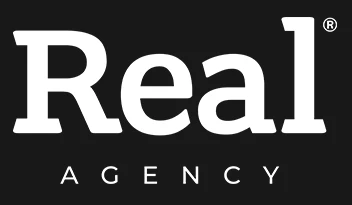Technical SEO Tips That Drive Revenue On Magento eCommerce Stores
Understanding the basics of technical SEO is crucial to any eCommerce business looking to boost its revenue. Increasing organic traffic to your store can have a huge impact on your bottom line and best of all, it’s free. The only investment you’ll need to make is in developing your knowledge and taking the time to put what you know into practice.
The larger a site becomes, the greater the demands and challenges you’ll face when it comes to technical SEO.
Optimising your store for search engines needn’t be a chore – especially when the rewards on offer can be so significant.
Tweet this now
Businesses rely on their revenue, it’s that simple. Anything that can be done to increase this figure is more than welcome; after all, this is what matters most at the end of the day. Without going through every element that makes up the more technical aspects of SEO (that would be quite a read!), understanding where to dedicate your time is key.
Let’s take a look at some important technical SEO areas you need to maintain for ongoing organic success:
Indexation and Crawling
In my opinion, one of the biggest challenges facing large Magento eCommerce stores is ensuring Google and other search engines are crawling and indexing your site effectively.
When stores become so large that they have thousands of URLs, giving Google as much guidance as possible in terms of what should and shouldn’t be indexed can only be beneficial. In fairness to its algorithm, Google generally does a good job of judging which URLs are relevant and should be crawled, but it’s not right 100% of the time.
Also, bear in mind that you have complete control over what you want Google to index through the specific URL management tools available in your Google Search Console account. Don’t use GSC? It’s a must-have if you want to understand and affect how your site is performing in search engine rankings.
Let’s use an example eCommerce store I worked on a few months ago to help paint the picture of what looks good and what doesn’t when it comes to implementing effective technical SEO changes.
This particular Magento store had never taken any interest in Search Console, so there was definitely work to do. With no URL crawl restrictions, Google was free to index the entire site – and that’s exactly what it did. There were over 50,000 indexed URLs when we logged in for the first time.
This isn’t wrong per se – Google had indexed all the important category and information pages – but it’s not ideal either. As this store was struggling to rank organically, I made the decision to deindex a significant number of these URLs.
Why? Because so many of these 50,000 indexed URLs were either duplicated or useless from a user perspective – they included colour filters, size filters, delivery options and more.
Deindexing a significant portion of these URLs would give the search engines a better understanding of the store. Not only that, less of the site’s crawl budget would be wasted on pages that were bringing in zero traffic and unhelpful to any potential user.
It goes without saying that before you attempt to remove any pages from Google’s index, you need to investigate whether they are driving organic to your eCommerce store.
After a few weeks, I began to see improved organic performance site-wide. Category pages were climbing the rankings and organic traffic had almost doubled when compared to the previous year. Every Magento store will have a particular sweet spot when it comes to crawlability, but it pays to be cautious and take your time as any wrong move can cost you sessions and therefore revenue.
URL Parameters
Following on from deindexing and ensuring Google is crawling your store effectively, you also need to take a look at your URL parameters – how your URLs appear when filters or additional tabs are clicked.
Back on my example store, I dug deep into Google Analytics (another must-have tool) to try and identify all the parameters being used. Unfortunately, there were plenty and they were causing each category page to have up to 30 unique URLs – most of which were crawlable, indexable and lacking a canonical tag strategy.
This could only be brought about problems in terms of organic performance, and it’s something we commonly see here when dealing with large Magento eCommerce stores that have been neglected from an SEO perspective.
The solution was to collect all the possible URL parameters and work out how they influence the category page itself. For example, does add?price= to the URL affect the content seen by the user? If it does, the change could be considered meaningful and you should leave these pages as crawlable. If it doesn’t, it makes sense to remove these parameters from being indexed by search engines.
You can do this with Google Search Console via the URL Parameters section in the short term, but you should really look to take care of these issues directly in the code of your store.
Unfortunately, there’s no one-size-fits-all solution that I can give you here – the best advice I can give is to take one parameter at a time and judge them individually. If it’s too late and thousands of indexed URLs already use that parameter, an alternative solution could be to use the ‘noindex’ or canonical tag instead of URL restrictions.
Faceted Navigation
The final technical SEO issue we’re going to cover is the infamous faceted navigation – one main landing page of products that allows you to move around the site by using filters rather than links to different URLs. It’s a common cause of poor organic performance, especially with older sites that were designed for a different time.
Why is this so bad? Every combination of filters generates its own unique URL which massively eats into Google’s crawl budget and leads to serious duplicate content issues – you can end up with thousands of different URLs that all replicate one base page. Not only that, your store will be made up of a huge number of super-specific URLs that are useless to both site visitors and search engines.
The only way to remedy this completely is to redesign the site from the ground up – not possible with large stores that already have thousands of indexed URLs. A more viable solution for most is to amend your robots.txt file to prevent Google from crawling and indexing the filtered URLs, but again every eCommerce store is different and should, therefore, be treated on a case-by-case basis.
Here’s a great guide from Moz on what to do if your store is struggling to perform because of faceted navigation.
Summary
Technical SEO is intimidating to many due to a lack of knowledge, but it’s a fundamental area of an eCommerce store that needs to be maintained.
Tweet this now
Rather than applying complex techniques, online stores should focus on just getting the basics right.
Ensuring the right parts of their site are crawlable and indexable, removing duplicate pages, consolidating URLs and directing crawlers to key pages are all straightforward enough to implement – and although these changes might not sound as impressive as adding Structured Data or focusing on voice search, they can definitely have a big impact on revenue generation.


